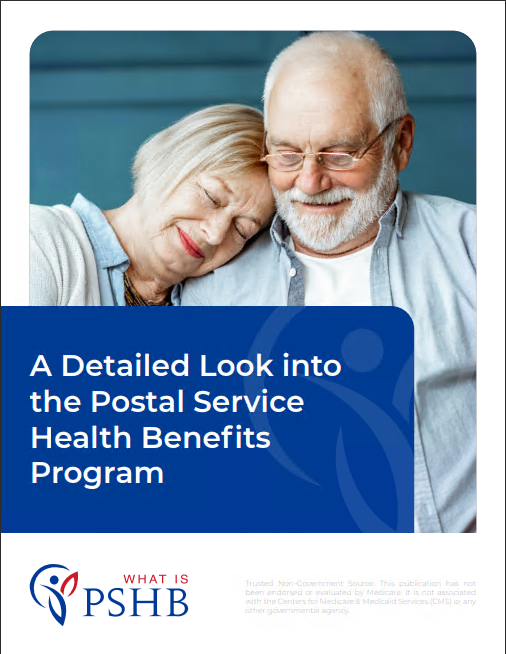Key Takeaways
-
Costs under PSHB in 2025 involve more than just premiums; timing, Medicare coordination, and out-of-pocket structures all affect what you owe.
-
Understanding how and when you contribute helps you avoid surprises in your overall healthcare spending throughout the year.
Understanding PSHB Contributions in 2025
The Postal Service Health Benefits (PSHB) Program brings a new level of structure to how you manage health insurance costs as a postal employee or retiree. In 2025, while government contributions remain generous, your share of premiums, copayments, coinsurance, and deductibles matters more than ever.
You need to stay informed about what you pay, when you pay it, and why certain amounts fluctuate depending on your healthcare usage, Medicare eligibility, and family situation.
How Premium Contributions Work
Premiums are the most visible part of your PSHB costs. In 2025:
-
The government typically covers about 70% of the total premium.
-
You are responsible for the remaining 30%.
-
Premiums are deducted from your paycheck or annuity payment, usually on a biweekly basis.
If you are still employed by USPS, deductions are automatic. If you are a retiree, deductions come out of your monthly annuity. If your annuity isn’t enough to cover your premium, you will be billed directly.
Monthly vs. Biweekly Premiums
It’s important to recognize that premiums are calculated on a biweekly basis but are often discussed in monthly terms. With 26 pay periods in a year, a “biweekly” premium may not perfectly translate into “twice per month,” leading to occasional confusion about how much you owe each month.
When Out-of-Pocket Costs Apply
Premiums alone don’t cover everything. PSHB plans include other cost-sharing features:
-
Deductibles: What you pay before insurance begins covering certain services.
-
Copayments: Fixed amounts for visits, prescriptions, or services.
-
Coinsurance: A percentage of the cost for services, usually after meeting your deductible.
Timing matters here too. Deductibles reset every January 1st. If you undergo expensive care early in the year, you’ll hit your deductible faster. But if you delay major services until late in the year, you might end up paying full costs again once the new calendar year starts.
How Medicare Affects Your Costs
For retirees eligible for Medicare in 2025, costs under PSHB work differently.
-
If you enroll in Medicare Part A (usually premium-free) and Part B (with a monthly premium), your PSHB plan often becomes secondary.
-
Some PSHB plans reduce or waive deductibles, copayments, or coinsurance if you are enrolled in Medicare Part B.
However, failure to enroll in Medicare Part B when required could cause higher out-of-pocket costs or even a loss of PSHB drug coverage, depending on the plan.
Key Medicare Timeline:
-
Most people should enroll in Medicare during the Initial Enrollment Period (three months before, the month of, and three months after their 65th birthday).
-
Postal retirees who became Medicare-eligible before January 1, 2025, and are not enrolled in Part B are generally exempt from the mandatory enrollment rule.
Why Timing and Usage Patterns Matter
The timing of your healthcare usage dramatically changes your financial experience with PSHB coverage.
-
Early Year Expenses: If you need expensive services in January or February, you’ll pay your full deductible upfront.
-
Late Year Expenses: If you wait until November or December for major procedures, you might pay lower out-of-pocket costs if you’ve already met your deductible earlier in the year.
Similarly, for prescriptions:
-
The $2,000 cap on out-of-pocket costs for Part D drugs (now integrated into many PSHB plans) helps, but reaching that cap depends on how much you spend and when.
-
Some enrollees hit their limit mid-year, while others might not reach it at all.
Dependents and Family Coverage: Higher Stakes
Family coverage significantly increases your financial responsibility. In PSHB plans:
-
Self Plus One and Self and Family coverage cost more than Self Only.
-
Deductibles and out-of-pocket maximums are often double for family coverage.
Carefully estimate whether family members will use enough healthcare services to justify a broader coverage tier. If you’re covering a spouse who is Medicare-eligible, coordinating benefits could lower your total out-of-pocket costs.
How Copayments, Deductibles, and Coinsurance Interact
Your healthcare spending isn’t linear. A few points to keep in mind:
-
Copayments usually apply immediately, regardless of deductibles.
-
Coinsurance often applies after you meet your deductible.
-
Deductibles are paid first in most non-routine situations like hospitalization or imaging.
Understanding the order of operations helps you predict your bills more accurately.
Example structure you may face:
-
Pay your deductible.
-
After meeting the deductible, pay coinsurance for ongoing services.
-
Use copayments for routine visits and prescription refills.
The out-of-pocket maximum sets a ceiling on your total yearly spending for covered services, providing some financial security.
Billing Cycles and Unexpected Charges
One tricky aspect of PSHB billing is the lag between service and billing.
-
Delayed Claims: Health providers may take weeks or even months to submit claims.
-
Billing Errors: Misapplied benefits or incorrect coding can lead to unexpected charges.
-
Balance Billing: If you use an out-of-network provider, you could face bills beyond what PSHB covers.
Always review your Explanation of Benefits (EOB) carefully and question discrepancies quickly to avoid overpaying.
Special Considerations for High Deductible Health Plans (HDHPs)
If you select a High Deductible Health Plan under PSHB:
-
You’ll pay much lower premiums but higher deductibles.
-
You may qualify for a Health Savings Account (HSA) if enrolled in an eligible plan.
-
HSA funds can cover qualified medical expenses tax-free.
Be mindful of your total healthcare needs before choosing an HDHP. Saving on premiums may not help if your out-of-pocket exposure is too high.
What Happens if You Don’t Pay on Time?
Payment lapses can be dangerous under PSHB.
-
Active Employees: Missed premium payments are rare due to payroll deduction but must be resolved immediately if they occur.
-
Retirees: If you miss premium payments billed directly to you, you risk coverage termination after a grace period (usually 30 days).
Late payments may also lead to reinstatement delays and administrative hurdles.
Annual Changes: Why You Must Review Every Year
PSHB plan structures are reviewed annually, usually announced during Open Season from November to December.
Each year, expect changes in:
-
Premium amounts.
-
Deductibles and copayments.
-
Provider networks.
-
Covered services.
Failing to review your plan during Open Season could mean higher costs or less suitable coverage for the next year.
Staying Ahead of PSHB Cost Surprises
To manage PSHB costs effectively in 2025:
-
Enroll in Medicare when required.
-
Compare Self Only, Self Plus One, and Self and Family carefully.
-
Track your deductible and out-of-pocket spending.
-
Stay in-network whenever possible.
-
Set aside emergency healthcare funds if possible.
-
Always review Open Season materials.
A small amount of yearly planning can prevent a lot of financial stress later.
Ready to Take Control of Your PSHB Costs?
Understanding your costs under PSHB isn’t just about reading your premium notice. It’s about tracking your overall healthcare spending, coordinating with Medicare if eligible, using in-network providers, and planning for the future.
If you need personalized help choosing the right PSHB plan or coordinating with Medicare, reach out to a licensed insurance agent listed on this website. They can help you better understand your benefits and make sure your 2025 healthcare strategy works for you.







